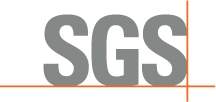SGS, the world’s leading inspection, verification, testing and certification company, is working with the food industry to combat seafood contamination issues. The company’s species identification services are at the heart of confirming regulatory compliance.
Seafood products are under heavy scrutiny following the discovery of contamination in supply chains and products being fraudulently mislabelled.
"There is no excuse for contaminated seafood in the supply chain; species identification can be conducted at any stage of production," said Rob Parrish, vice president global food SGS. "This scandal clearly demonstrates the importance, to both the industry and consumers, of ensuring that the species a company orders, and pays for, is the species a company receives. For consumer safety it is particularly important in seafood."
A recent study by Oceana revealed that 33% of 1,215 samples analysed in the US were mislabelled. Incorrect labelling poses a risk to human health. Swapping one species for another opens the door to potentially harmful toxins being consumed and making people ill.
Oceana reported that they found seafood fraud everywhere they tested. Oceana’s study targeted fish with regional significance as well as those found to be frequently mislabelled in previous studies, such as red snapper, cod, tuna and wild salmon. Of the most commonly collected types of fish, snapper and tuna had the highest mislabelling rates across the country at 87% and 59%, respectively. While 44% of all the retail outlets visited sold mislabelled fish, sushi venues had the worst level of mislabelling at 74%, followed by other restaurants at 38% and then grocery stores at 18%.
The SGS network of laboratories and capabilities are structured to optimise cross-lab synergies, to create specialised competence centres, to share best practices and to develop new testing methods for client and network benefit. SGS has a broad range of technologies for species identification services, including:
- Fish species identification based on the recommended method by USA FDA
- Qualitative and quantitative polymerase chain reaction (PCR)
- Enzyme-linked immuno sorbent assay (ELISA)
Furthermore, the SGS global network of laboratories offers a comprehensive range of seafood contaminant testing across six continents:
- Heavy metals
- Histamine
- Pathogen detection and hygiene monitoring
- Veterinary drug residues, including: fluoroquinolones, malachite green, crystal (Gentian) violet, brilliant green, nitrofuran metabolites, chloramphenical
- Viruses
- Water retention agents
In a global marketplace all services are tailored to meet the regulatory requirements of a product’s destination market.
"Even before this report, demand for species identification on food products has been increasing in the last year," said Parrish. "To help clients deliver high-quality safe products, that are correctly labelled, SGS is completing the planned expansion of its global capabilities, creating competence centres in Asia, Europe and the Americas."
The Oceana report exposed inadequacies in the detection and prevention of seafood fraud. Potentially damaging to the seafood industry, fraud:
- Threatens human health
- Creates a market for illegal fishing
- Makes it difficult for consumers to make eco-friendly choices
- Misleads consumers about the true availability of seafood and the state of the marine environment
Species identification can identify fraud and prevent illegal and/or sub-standard products reaching the market. In addition, species identification of fishmeal used in aquaculture ensures that fishmeal does not contain meal originating from the same species as the fish being fed.
Moreover, this Oceana report follows a number of seafood industry reports of fraud. One of the most common instances of seafood fraud relates to short weighting or ‘glazing’, which involves adding water and water retention agents to seafood to increase the size and weight of seafood products. This practice causes economic harm to both industry players and the final consumer. Accurate detection of water retention agents in seafood products helps identify fraudulent suppliers.
Finally, a reliable system of supply chain monitoring is needed to protect your company’s brand.
SGS’s global network provides supplier audits, product inspection, product sampling as per official methods, mystery shopping and control on sales points to mitigate risks through the food supply chain. Our training services have been designed to improve hygiene and sanitary risk management related to the specific activities of the food industry and help to implement long-term comprehensive food safety systems.
SGS is the world’s leading inspection, verification, testing and certification company. SGS is recognised as the global benchmark for quality and integrity. With more than 75,000 employees, SGS operates a network of over 1,500 offices and laboratories around the world.










